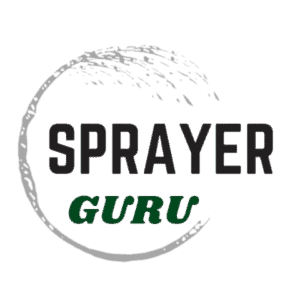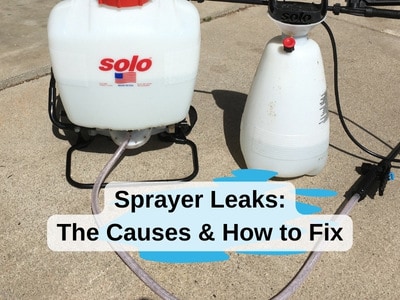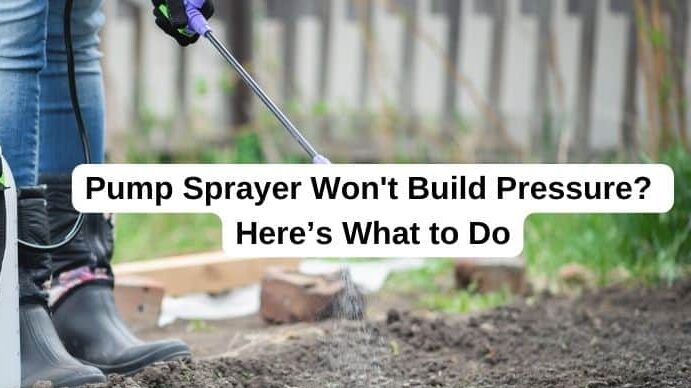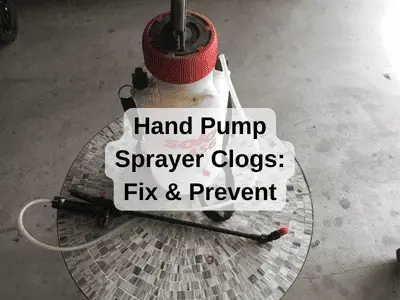Relieving pressure in a hand pump or backpack sprayer is a crucial safety step to prevent accidental discharge. When you get done using your sprayer but there is still pressure in the tank, accidentally bumping or pulling the trigger will spray fluid all over. Likewise, it can be hard to remove the lid of the sprayer and if you can remove it a potentially harmful (or at least unpleasant) gust of fumes can spurt out.
By carefully releasing pressure, users can maintain safe control over the sprayer, ensuring that the liquid is only applied where it is intended. This is safer, helps you to avoid messes, and makes sure that you are using your spray solution efficiently.
Relieving Pressure in Hand Pump Sprayer
It is very common for sprayers produced today to come equipped with a built-in pressure relief valve. This allows the user to easily “bleed” or “burp” out the air in the tank to relieve any pressure in the tank. This valve is usually located on the top of the tank and it is easily just pulled up by hand.
If your sprayer does not have a built-in relief valve, you can release the pressure in two ways. First, you can pull the trigger on the spray wand and spray until all the pressure is gone. This works but obviously, you need to have a place to “dump” this extra liquid. You either spray more or you spray into a bucket. This way is slower and it can be messy.
The other option is to slowly crack the lid. This accomplishes the job but sometimes the lid can be very hard to open when the tank is under pressure. If you find yourself with a stubborn sprayer lid and no other way to relieve the pressure, check out this guide with lots of tips to help open a stuck sprayer lid.
Depending on the type of liquid in the tank. The fumes coming out when you release the pressure can be hazardous. It is a good idea to wear eye protection and gloves. You don’t want your face near the tank when you let the air out.
Relieving Pressure in Backpack Sprayers
A backpack sprayer may have a built-in relief valve to expel pressure from the tank. This might be on the tank just like with a hand pump sprayer and you simply pull to release pressure. Many backpack sprayers do not have a relief valve built in. In this case, we have a couple of options, both similar to the methods used for hand pump sprayers.
One way to do this is by engaging the spray wand’s trigger, allowing the remaining pressure to dissipate as the liquid is sprayed out. This requires a suitable area to safely dispose of the excess fluid, either by continuing to spray onto the target area or by directing it into a container. This approach is effective, though it may be slower and could potentially create some mess.
Alternatively, you can gradually loosen the backpack sprayer’s lid, a method akin to what you might do with a hand pump sprayer. This step should be approached with caution, as the lid can often be quite tight due to the internal pressure.
As with hand pump sprayers, safety precautions are important, especially when dealing with hazardous chemicals. Wearing protective eyewear and gloves is advisable to protect against harmful fumes and liquid splashes. It’s also important to keep your face and body away from the tank during the depressurization process to minimize the risk of exposure to any harmful substances.
Pressure Control In Backpack & Hand Sprayers
While many backpack sprayers do not have a built-in relief valve they do have other pressure control features that you can take advantage of to avoid excess pressure when spraying.
Many backpack sprayers will have a feature that allows you to set the maximum operating pressure. This is the case with the Solo Deluxe models, you can adjust the pressure regulator inside the tank. It has four settings: 15, 30, 45, and 60 psi. This allows you to limit the maximum pressure in the tank to help avoid needing to relieve excess pressure in the sprayer.
Battery-powered backpack sprayers offer more consistent operating pressure. They also allow you to manually adjust the operating pressure as you spray. While this does not completely relieve pressure it does give you some control and helps you avoid a lot of pressure remaining in the tank when you get done spraying. So you can avoid needing to pull the trigger and spray until the pressure is zero or struggling to open a tight lid when the tank is under pressure.
Conclusion
If there is a lot of pressure remaining in your tank when you finish spraying it can cause some problems. The lid can be hard to open, and if you bump the trigger it could spray chemicals in areas that you don’t want. It can be messy and potentially harmful.
Fortunately, releasing the pressure is simple. You can use the built-in relief valve if your sprayer has one or safely expel pressure using the methods above.
RELATED:




